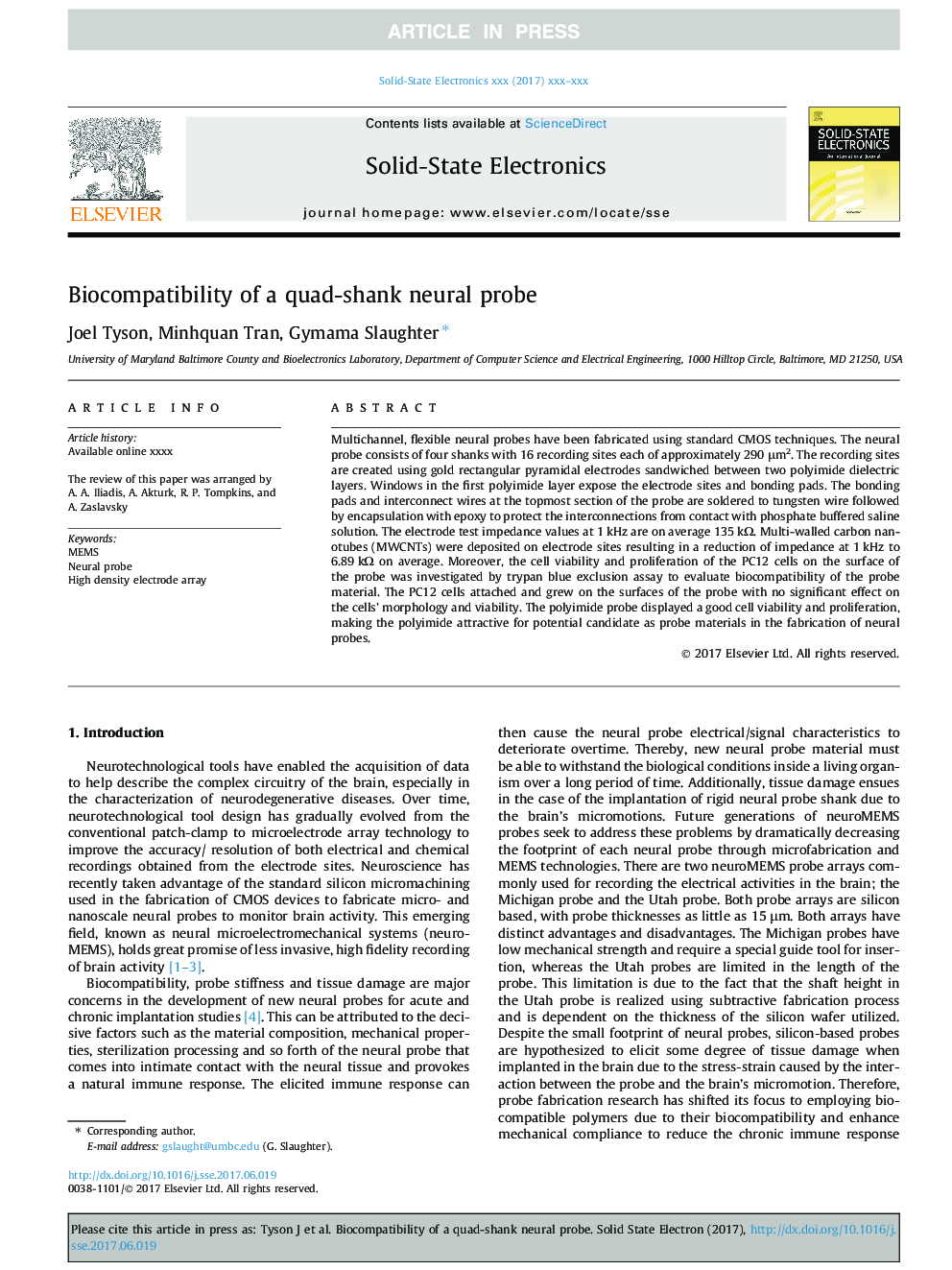| Article ID | Journal | Published Year | Pages | File Type |
|---|---|---|---|---|
| 5010309 | Solid-State Electronics | 2017 | 7 Pages |
Abstract
Multichannel, flexible neural probes have been fabricated using standard CMOS techniques. The neural probe consists of four shanks with 16 recording sites each of approximately 290 μm2. The recording sites are created using gold rectangular pyramidal electrodes sandwiched between two polyimide dielectric layers. Windows in the first polyimide layer expose the electrode sites and bonding pads. The bonding pads and interconnect wires at the topmost section of the probe are soldered to tungsten wire followed by encapsulation with epoxy to protect the interconnections from contact with phosphate buffered saline solution. The electrode test impedance values at 1 kHz are on average 135 kΩ. Multi-walled carbon nanotubes (MWCNTs) were deposited on electrode sites resulting in a reduction of impedance at 1 kHz to 6.89 kΩ on average. Moreover, the cell viability and proliferation of the PC12 cells on the surface of the probe was investigated by trypan blue exclusion assay to evaluate biocompatibility of the probe material. The PC12 cells attached and grew on the surfaces of the probe with no significant effect on the cells' morphology and viability. The polyimide probe displayed a good cell viability and proliferation, making the polyimide attractive for potential candidate as probe materials in the fabrication of neural probes.
Keywords
Related Topics
Physical Sciences and Engineering
Engineering
Electrical and Electronic Engineering
Authors
Joel Tyson, Minhquan Tran, Gymama Slaughter,
